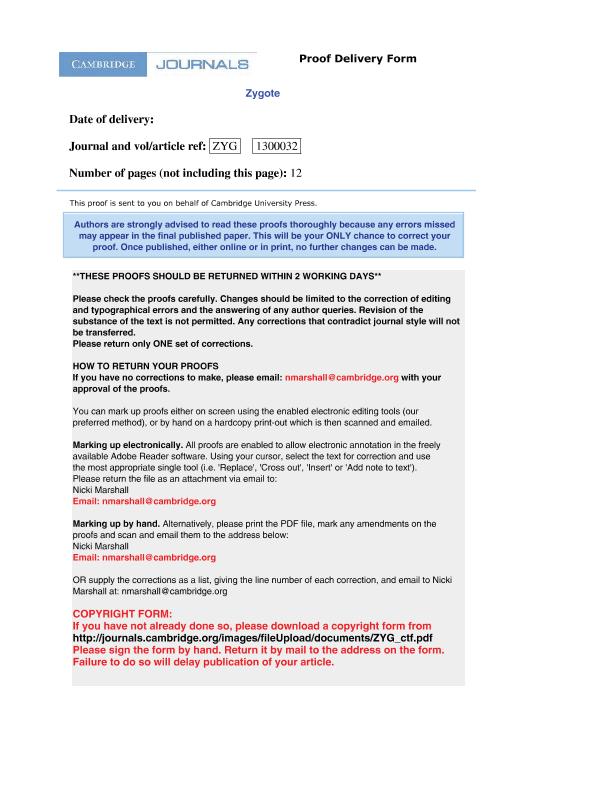Artículo
Xepac protein and IP3/Ca2+ pathway implication during Xenopus laevis vitellogenesis
Fecha de publicación:
07/2013
Editorial:
Cambridge University Press
Revista:
Zygote
ISSN:
0967-1994
Idioma:
Inglés
Tipo de recurso:
Artículo publicado
Clasificación temática:
Resumen
The objective of this study was to elucidate the signalling pathways initiated by cAMP once inside the Xenopus laevis oocyte, where it triggers and maintains vitellogenin endocytic uptake. Our results showed the presence of Xepac transcripts at all stages of oogenesis and we demonstrated that a cAMP analogue that exclusively activates Xepac, 8-CPT, was able to rescue the endocytic activity in oocytes with uncoupled gap junctions. Inhibition experiments for the IP3/Ca2+ signalling pathway showed either a complete inhibition or a significant reduction of the vitellogenic process. These results were confirmed with the rescue capability of the A-23187 ionophore in those oocyte batches in which the IP3/Ca2+ pathway was inhibited. Taking our findings into account, we propose that the cAMP molecule binds Xepac protein enabling it to activate the IP3/Ca2+ pathway, which is necessary to start and maintain X. laevis vitellogenin uptake.
Palabras clave:
Camp
,
Ip3/Ca2+
,
Vitellogenesis
,
Xenopus Laevis
Archivos asociados
Licencia
Identificadores
Colecciones
Articulos(INSIBIO)
Articulos de INST.SUP.DE INVEST.BIOLOGICAS
Articulos de INST.SUP.DE INVEST.BIOLOGICAS
Citación
Serrano, María de Los Angeles; Luque, Melchor Emilio; Sanchez, Sara Serafina del V.; Xepac protein and IP3/Ca2+ pathway implication during Xenopus laevis vitellogenesis; Cambridge University Press; Zygote; 23; 1; 7-2013; 99-110
Compartir
Altmétricas




